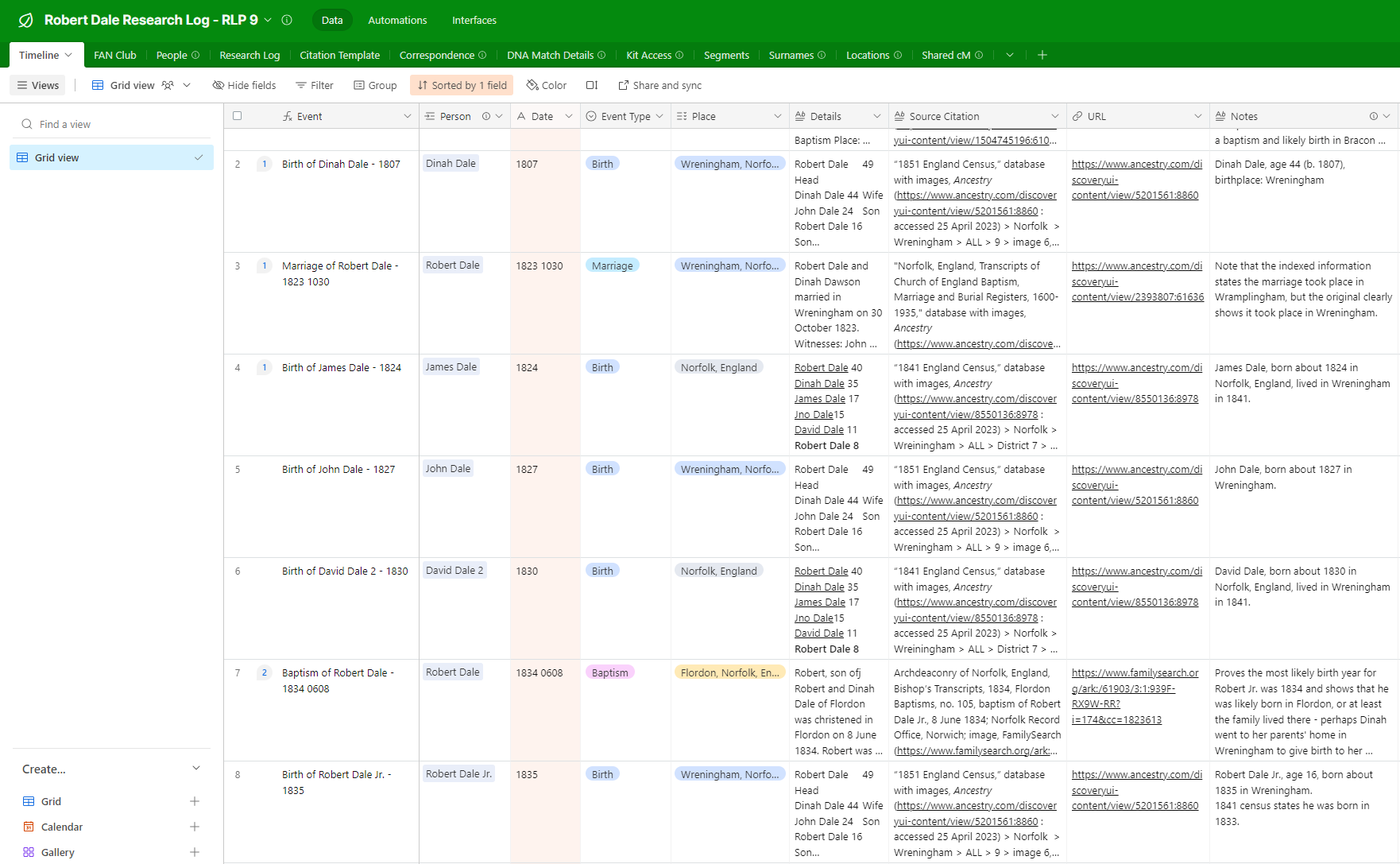
This series focuses on how I applied the steps in the Research Like a Pro process for a personal research project. I walked through these steps in a study group I participated in last fall. The first step was to create a research objective. This was mine: Trace the descendants of Robert Dale in search of potential autosomal and Y-DNA test takers. Robert was an agricultural laborer born on 30 August 1801 in Bracon Ash, Norfolk, England. Robert married Dinah Dawson on 13 October 1823 in Wreningham, Norfolk, England. He died in April 1879 in Flordon, Norfolk, England.
The next step is to use all known information and records about the research subject to create a timeline. The timeline can help you spot holes in your research. Revisiting and analyzing the records can also help you discover clues that will guide your research and determine the quality of existing evidence.
Because I had not previously studied the family of Robert Dale beyond using censuses to see that they lived in parishes near Wymondham, Norfolk, England, from 1841 through 1871, it was a good exercise to survey the existing evidence. I added their residences in those census years to my timeline and through record hinting on Ancestry and FamilySearch, I was also able to verify a few vital events for family members.
I used Nicole Dyer’s Airtable Research Log template to create my timeline. This is a great resource, and it can be downloaded and used free at Airtable.com. Simply create an account, find the template in the Airtable Universe, and start entering data. If you want to learn more about how to use Airtable for genealogy research logs, watch Nicole’s YouTube tutorial here.

After completing my timeline, I noticed that I hadn’t found the family on all available censuses, and I figured there were vital records for their children that might be located. Because I wanted to trace all of Robert’s descendants, I wanted to find these records. I also knew I would be working largely in census, vital, and church records to identify Robert’s children and grandchildren. I added detailed notes to my timeline so I wouldn’t forget the clues and information I had discovered in the process.
Another part of the timeline analysis step is to analyze each source. I needed to determine whether each source was original, derivative, or an authored narrative. I then needed to decide who the likely informant for each record was. Was the informant an eyewitness to the events recorded on the document, or did they learn the information from another person? Is the informant unknown? Finally, I needed to decide whether each document provided direct, indirect, or negative evidence for my research question. I was working with censuses and some church records, which are considered original records. They provided mostly direct evidence for the generational connection between Robert and Dinah and their children. If source analysis is unfamiliar to you, stay tuned! I am working on a series that will go in-depth on this topic.
After creating the timeline, I was ready for the next step in the Research Like a Pro Process: Creating a locality guide. This is one of my favorite steps! In my next post, I will share my process for creating the guide and show some of the resources for my Norfolk, England locality guide.
